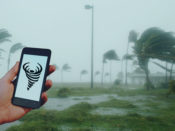Category: Blog
-
Teach Myanmar CAP and They will have CAP for Life
The Department of Meteorology and Hydrology (DMH) has championed in implementing and operationalizing their warning and situational-awareness platform, hosted at www.dmhwarnings.gov.mm Workshop Intro To discuss the next steps and bring closure to the CAP on a Map project, a dissemination workshop was held in Naypyitaw (02 September 2016). The workshop was held at the Hotel…
-

Thailand BarCamp Reportback 2016
In August 2016 a number of SSF community members met in Thailand to discuss various issues related to the SSF. This gathering was funded by the SSF’s Council and the President. The people who attended were: Devin Balkind Nuwan Waidyanatha Dominic Konig Lutz Frommberger Biplov Bhandari We organized a two day “barcamp” style meeting where…
-
Alert Hubs, a Topic at the 2016 CAP Forum Among Experts
Alert Hubs will play a significant role in receiving and sharing early warnings. It was anticipated that each Nation would require to host a National Alert Hub. Those Alert Hubs would feed into the Global Filtered Alert Hubs. Eliot Christian in his presentation said, “With so many countries implementing CAP-enabled alerting, we can see that…
-
SAMBRO Warning Exercise in the Maldives
SAMBRO Centralizes Emergency Information Management but Decentralizes the Emergency Management Responsibilities To prove the concept, we carried out early warning controlled-exercises in the Island of Tulesdoo, in the Maldives. It’s located 27KM DIRECTION of the capitol city Male. Similar to other Islands, the Island Council members are also responsible for emergency and crisis response. The…
-

Work has started on Mobile Disaster Pictographs
30% of the Asian and Sub-Saharan populations are low-literate – that means, we cannot really reach them through textual messages. In the case of disaster communication, we clearly do not want to have those people excluded. Pictographs come into mind to be used to communicate non-textually. But how should these pictographs look like? How can…
-
SAMBRO Tested and Myanmar is Ready to Go Live
The Myanmar Department of Meteorology and Hydrology (DMH) is now publishing live CAP feeds through their Warning and Situational-Awareness platform. Prior to making the decision to publish live alerts, through the CAP-enabled Sahana Alerting and Messaging Broker (SAMBRO), DMH and associated Stakeholders conducted a series of silent-tests and live-exercises. The silent-tests, carried out over three…
-
PAGASA Originating and SAMBRO Relaying CAP Warning Messages in the Philippines
Originate and Relay Alerts Philippines Atmospheric Geophysical and Astrological Service Administration (PAGASA) and the Sahana Alerting and Messaging Broker (SAMBRO) systems’ interoperability was tested during the controlled-exercise in Manila, Philippines (11-14th July 2016). The process was simple – valid Common Alerting Protocol (CAP) messages originating from the PAGASA “public alerting” software tool were received into…
-
None Forgotten with Sahana Situational-Awareness – Maldives!
A Ministry of Tourism (MOT), Health Protection Agency (HPA), and the Maldives Red Crescent Society (MRCS) concern was: why the Maldives National Defence Force (MNDF) and the National Disaster Management Center (NDMC) did not notify other organizations during crises? Fare enough, MNDF and NDMC primary objective is assessing the situation, dispatching response resources, and mitigating the…
-
Myanmar Loving the SAMBRO Mobile APP
We conducted controlled-exercises in the Nyaungdon and Kunyangong Townships in Myanmar. The SAMBRO mobile app was exciting to the participating emergency firs-responders. The number of participants grew from 10 to 25 when they heard of the mobile app and were keen in testing the application. A significant number of the first-responders; especially in Kunyangong, did…
-
Sri Lanka’s Sunday Times Calls Sahana one of the “Solutions under our nose for better crisis co-ordination”
Recent floods in Sri Lanka have local media asking aloud why Sahana software, which was originally created in Sri Lanka after the 2004 Tsunami, isn’t being used by the government to help ease persistent coordination problems. Sahana Director Nuwan Wadyanatha is quotes multiple times in the article. One key quote is pasted below. “If policy-makers…
